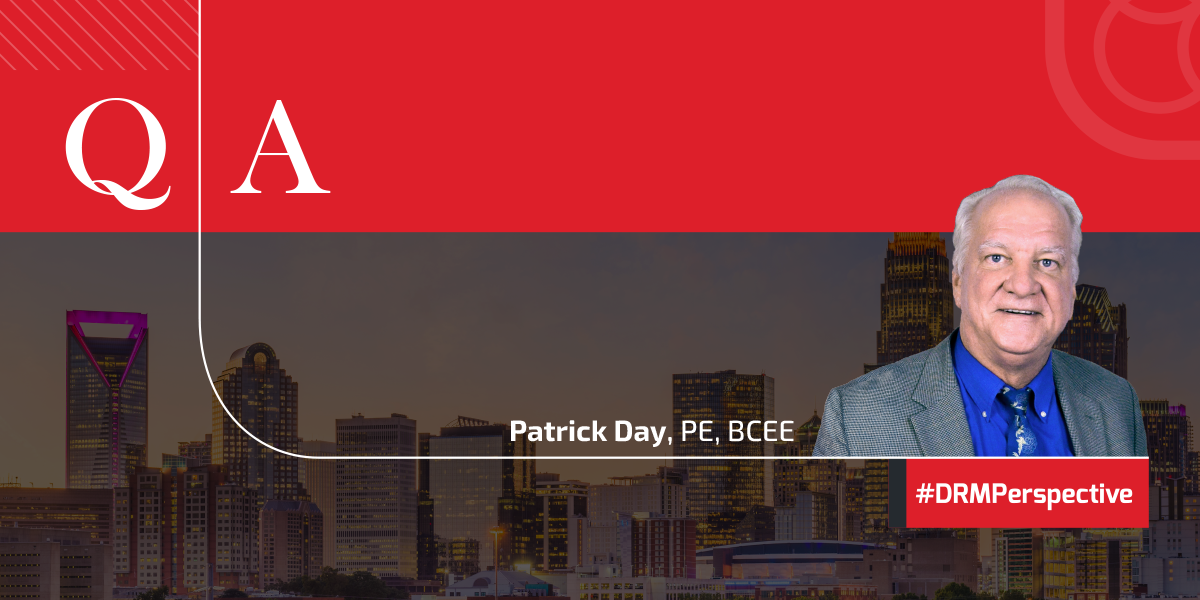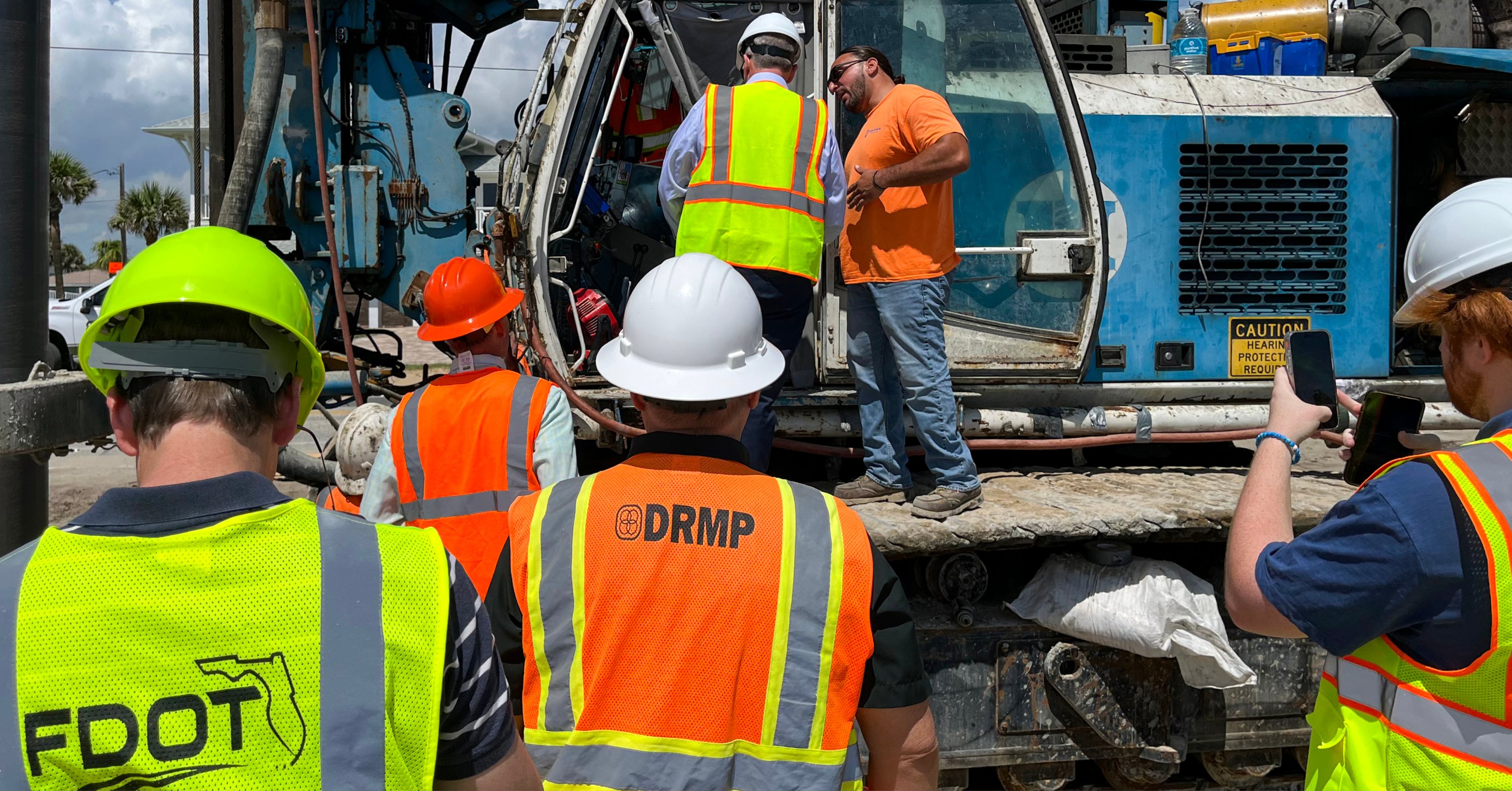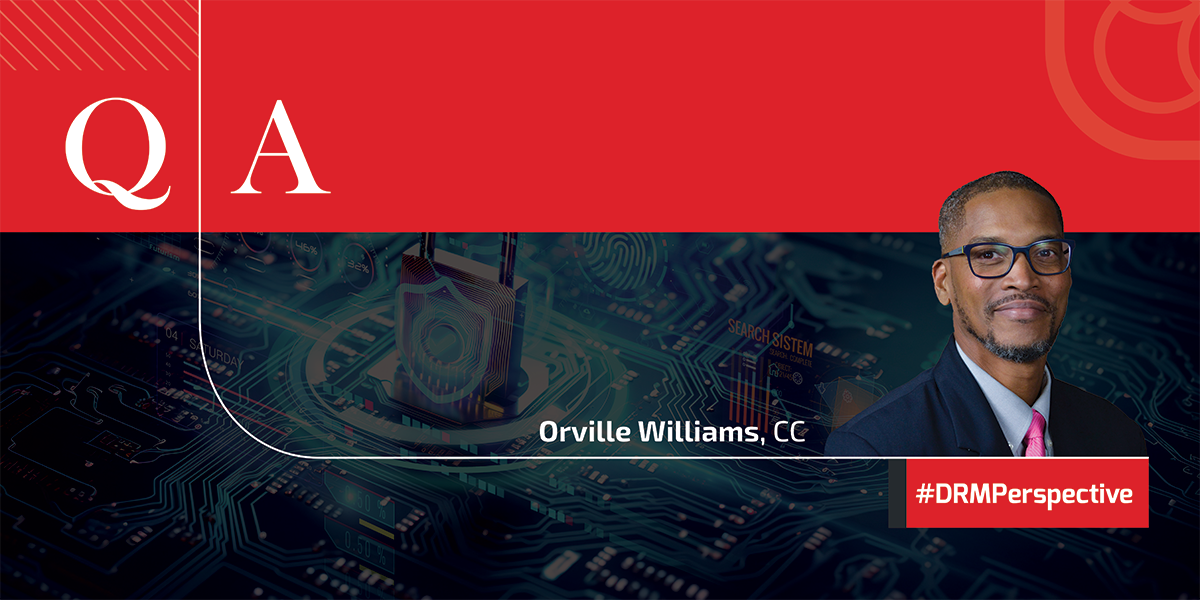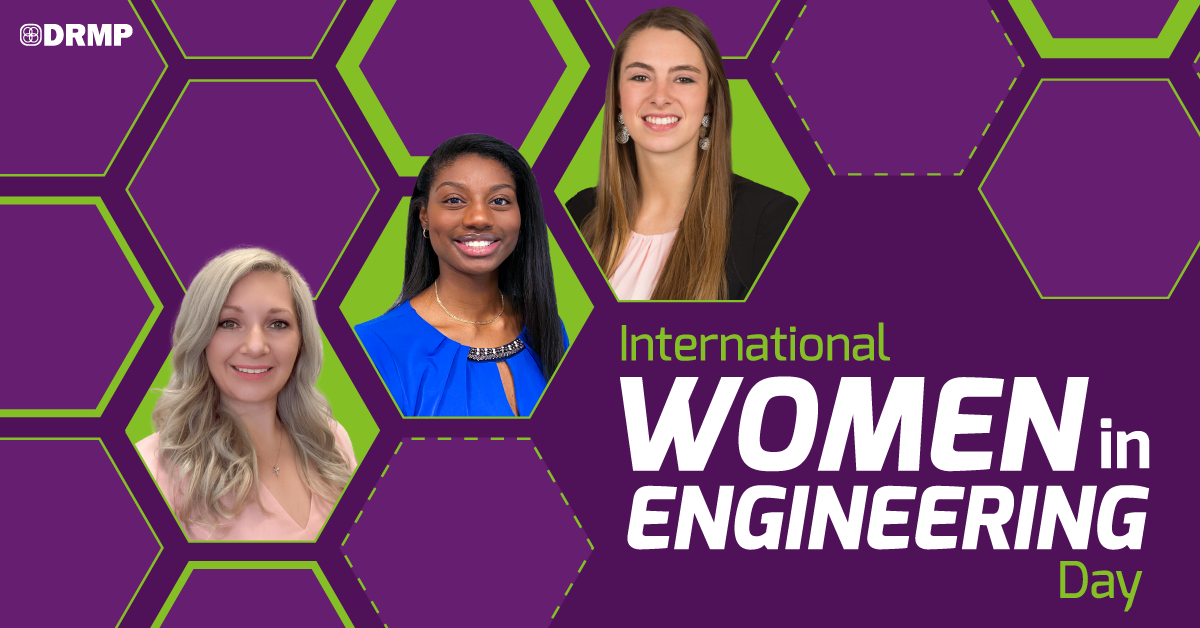Most people don’t think twice about where their water comes from or where it goes after it swirls down the drain. But behind the scenes, civil engineers work every day to keep those systems running safely and reliably. DRMP’s Utility Services Division plays an important role in maintaining the smooth, dependable operation of these systems.
In recognition of National Public Works Week, Patrick Day, PE, BCEE, DRMP’s utility division manager, shares insights into what it takes to plan, design, and manage the infrastructure that supports clean water, public health, and everyday life.
What are water, wastewater, and reclaimed water utilities, and why are they important in civil engineering?
To me, water, wastewater, and reclaimed water systems are more than engineering components; they're the circulatory system of a thriving community. These systems ensure that families have clean water to drink, businesses can operate safely, and our environment remains protected. Many of the historical plagues took place because of unsanitary conditions due to impure water and improper disposal of waste. Interestingly, during the Middle Ages, people began drinking beer regularly because the brewing process, which included boiling, made it safer than untreated water. It’s a reminder of how important clean water is to public health, and why I’m passionate about the systems that make it possible today.
So, when I'm working on a project for a client, I'm not just thinking about pipes and pumps. I'm thinking about the people who rely on those systems to go about their daily lives. That's why civil engineering in this discipline feels so meaningful. We don't often get headlines, but without what we do, modern life simply doesn't work. However, my children look at me in confusion. I point to a manhole and say, “I designed that.” Then I explain that there is a complete underground system, which they think is cool.
What types of utilities do you work with at DRMP, and how do they impact planning?
I work exclusively on water distribution, wastewater collection and treatment, and reclaimed water systems. Each of these has its unique challenges, and they all require careful planning. For example, reclaimed water can't just be added as an afterthought. It needs dedicated infrastructure, cross connection control, and clear coordination with potable systems. I approach every project with the long term in mind. Planning for future demands, regulatory changes, and potential expansion is key. Over the years, I’ve seen how upfront planning can save municipalities millions in retrofits and rework.
What role does a civil engineer play in maintaining these systems?
We’re involved in much more than just the design phase. We evaluate system performance, recommend improvements, and help communities maintain and upgrade their systems. I've authored due diligence and asset management reports for aging systems, helping clients identify critical needs and prioritize investment. Asset management has become a powerful tool in this field, especially as budgets tighten and expectations rise. My job is to make sure the systems we design today will still serve us well tomorrow. One of the steps I use in my design is to speak with contractors and plant operators to get their input on what helps with the operation and maintenance. I spent two weeks in the field as an engineer intern (EI) learning from treatment plant operators about poor design issues.
What inspired you to pursue this line of work?
I came into this profession with a mix of curiosity and a desire to serve. I actually started out with a degree in English, which gave me a strong foundation in communication, but I was drawn to the problem-solving aspect of engineering. Water utilities offered the perfect blend of technical complexity and societal impact. There's something rewarding about knowing that the systems I've helped design support thousands of people every day.
The other aspect of this type of work is that it is universal. Every municipality needs water and sewer services. As a young person, I knew I could find a job wherever I wanted to live.
What are the biggest challenges in designing utility systems?
One of the biggest challenges is anticipating growth and change. In Florida, for instance, the pace of development can quickly overwhelm infrastructure. One aspect of this is when we design a sewer system for a new development or community that is starting from ground zero, the initial design has to take into consideration that there will be very little water demand and sewer flow. This must be factored into the design. A key question is: what level of buildout should the initial design be based on?
We also have to work within increasingly constrained budgets. Labor and material costs continue to rise, which makes efficient design and long-term planning more important than ever. That’s where asset management comes in. By helping cities understand the condition and value of their infrastructure, we can make smarter decisions that stretch limited dollars further.
How do you ensure that systems are sustainable and resilient?
Sustainability is embedded in every decision we make. We design systems at DRMP that are energy efficient, that conserve water through reuse, and that can adapt to changes in climate and population. For instance, we often incorporate variable frequency drive pumps to reduce energy consumption and SCADA systems for real-time performance monitoring. Reclaimed water has become an essential part of this conversation. In many places, it's a necessity to preserve potable resources.
Another emerging aspect of sustainability is direct potable reuse (DPR), which involves sending highly treated wastewater directly into the drinking water supply without the traditional step of environmental buffering. Since the treated wastewater must already meet drinking water standards, discharging it into the ground or a water body can be seen as unnecessary. DPR is already being implemented successfully in various parts of the world, and adopting this approach is essential for enhancing our water resiliency and long-term sustainability.
Can you share a standout project?
One project that always stands out is the Pinewoods Master Pump Station in Lee County, Fla. DRMP was brought in to design a system that could serve 10 large developments and connect to a treatment facility 11 miles away. The complexity was immense with 70 interconnected pump stations, extensive modeling, and multiple stakeholders. But the result was a highly efficient, scalable system that continues to serve a growing community. That project showcased what thoughtful engineering, good modeling, and close coordination can achieve.
What are common mistakes in utility layout, and how can they be avoided?
A lot of mistakes stem from underestimating future demands or failing to coordinate across disciplines. I see utilities crammed into corridors without proper spacing or long-term flexibility, which creates maintenance headaches later. To avoid that, I always start with a comprehensive layout plan that includes space for growth, accessibility for maintenance, and coordination with other infrastructure. It sounds simple, but it requires diligence and experience.
Communication and electric cables are now being installed underground and often the owner of the right of way (ROW) is not even aware of them, which causes a redesign when the project goes to construction. Making sure of what exists is critical.
How do you work around aging infrastructure in older communities?
Working in older areas is like detective work. You never really know what you'll find until you open the ground. That’s why we rely heavily on subsurface utility engineering (SUE), video inspection, and as built documentation. We also phase construction carefully, ensuring that service remains uninterrupted. It's not just about the technical fix. It’s also about maintaining trust with the community you're serving.
In these cases, we also make sure the contractor is aware of areas where we could not get detailed information for what exists underground. This allows the contractor to know they may face unforeseen conditions. We encourage them to explore these areas upfront so we can make any changes to our plans if necessary.
What role does technology play in utility design?
Technology is absolutely foundational to how we work. From WaterCAD modeling to GIS mapping, we use digital tools to simulate system behavior, plan capacity, and evaluate alternatives. SCADA systems help monitor system performance in real time, allowing operators to address issues before they become problems. And asset management software is helping communities take a more strategic, data driven approach to maintenance and budgeting.
What trends excite you most?
I’m really excited about the shift toward potable reuse. As I mentioned earlier, treating wastewater to drinking water standards is no longer science fiction. It’s happening. That, along with decentralized water treatment and smarter asset tracking, represents a huge step forward for our field. We're designing adaptive, intelligent systems that can evolve with the communities they serve.
How do you coordinate installations with multiple teams?
Coordination is where projects are won or lost. We make it a priority to host early and frequent meetings, keep documentation tight, and maintain a single point of accountability. Especially on complex urban projects, where space is tight and systems are interdependent, strong communication is key. I've found that when everyone understands the "why" behind the design, they execute better. Many times when we are doing utility relocation as part of a road widening project, I make sure the drainage design team lets me know upfront where the drainage system is located as this typically is the utility that is locked into place. It cannot be moved. For water and wastewater, we have to design around this. If there is a small tweak in the drainage design that can be made to save a water or utility diversion, I coordinate with the drainage design team.
Describe a challenging problem and how you overcame it.
The Downtown Fort Myers, Fla., utility replacement project DRMP designed was probably the most logistically intense challenge I’ve faced. Replacing utilities across 54 city blocks, while keeping businesses open and minimizing disruption, took five years of phased construction, detailed modeling, and a lot of listening. We created a custom capacity model, held weekly coordination meetings, and even adjusted designs on the fly. That project won the American Public Works Association (APWA) Project of the Year, and I think it was because we combined technical rigor with genuine public engagement.
How do you see utility work evolving?
Utility work is becoming more integrated and more responsive. As water becomes scarcer and communities grow, the systems we design need to be both flexible and smart. I see a future where real-time monitoring, asset dashboards, and decentralized treatment are standard. Our job as engineers is evolving from just designing systems to helping communities adapt and thrive.
What advice would you give someone starting out?
Be curious, stay humble, and always look at the big picture. Engineering is about details, but the real skill is connecting those details to real-world outcomes. Learn to listen to operators, clients, and residents. And don’t be afraid to take on the messy, complicated projects. That’s where the real growth happens.

















